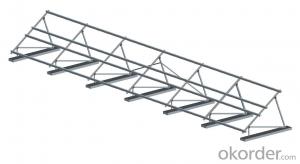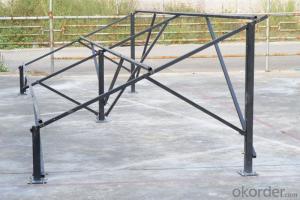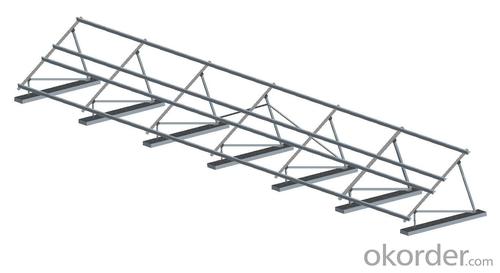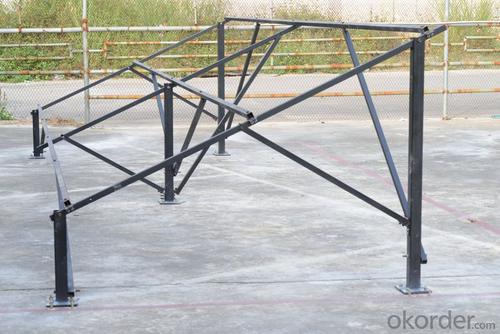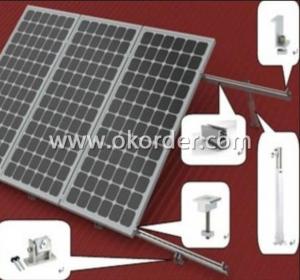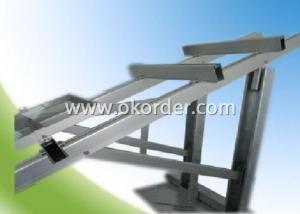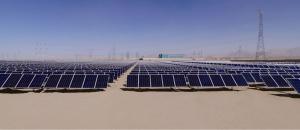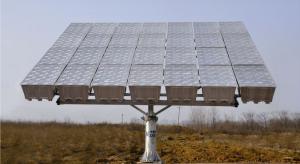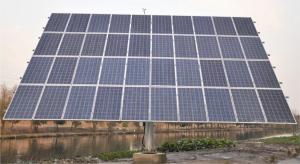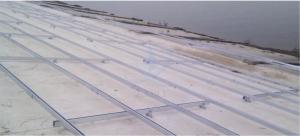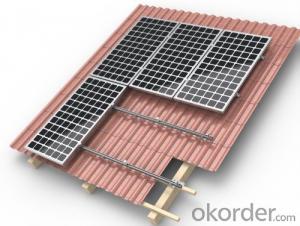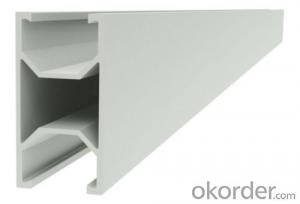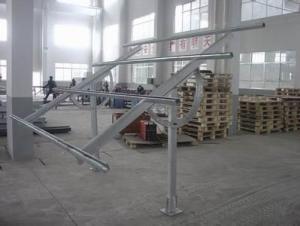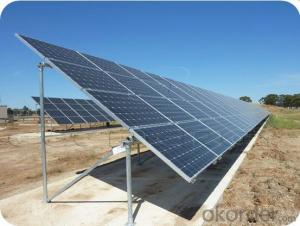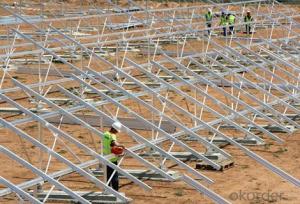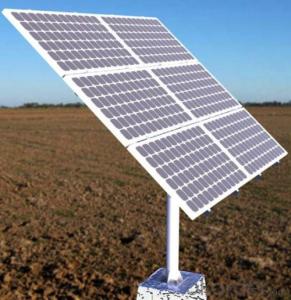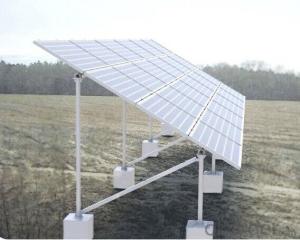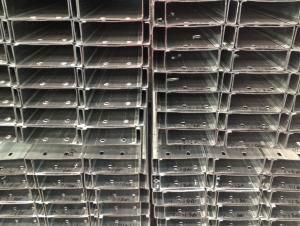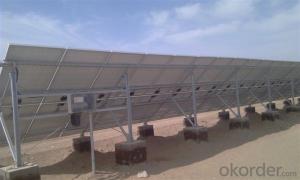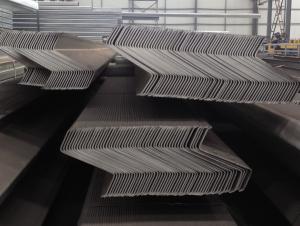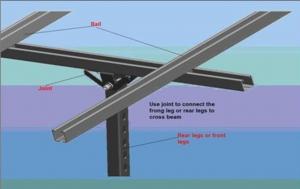Ground Mount Solar Racking Systems - TT-SK-04 Solar Panel Mounting System
- Loading Port:
- Shanghai
- Payment Terms:
- TT OR LC
- Min Order Qty:
- -
- Supply Capability:
- 50万套 set/month
OKorder Service Pledge
OKorder Financial Service
You Might Also Like
PV Mounting brackets are special solar photovoltaic systemfor placing, installing, fixing the solar panel design. Generally materials arealuminum, steel structure, stainless steel. PV mounting products at groundmounting system, flat roof mounting system, adjustable angle roof rack system,inclined roof rack system, column bracket system.
The Ground Mounting System including concret basement sysytemand steel pipe sysytem, Titanergy provides total solution for flat or pitchedroof with patent products.On the basis of the given project data, specificnational standards and guidelines, Titanergy will calculate the completestructural analysis and create a complete project plan to make sure reliablestructural safety.We provide high quality HDG steel and aluminum products forthe ground mounting sysytem,witch can make sure the security and durability ofthe project.
Features and Advantages
n The rail bracket is easy to install, just use simple tools(eg, Allen wrench) can be easily installed. Rail connecting member can freelyadjust the length, the stent may be pre-installed on the roof, and thenappropriately adjusted according to the size of the solar panel.
n The combination of strong, aluminum rails and card blocks fora variety of venues and a variety of materials roofs (such as metal, ceramicand other kinds of tile surface)
n Component compatibility, and rail can meet PV modules fromdifferent manufacturers.
n accuracy, the length of the rail to the nearest millimeter,the construction process, not because of the length is too long or too shortfor the second cut.
n flexible assembly, rail hooks can adjust the spacing modulearray and tile has been installed successfully address the uneven roofconstruction led to difficult problems.
n design standards, product design and development process instrict accordance with GB, the German standards and other internationalstandards to ensure products reach the world advanced level.
n Quality assurance, the stent main material is high-qualityaluminum and stainless steel, effectively prevent corrosion of oxidation.Products can be recycled, reducing environmental pollution.
n Carried out strictly according to the current specificnational standards
n Perfectly optimized components and complete structuralanalysis for the sysytem
n High corrosion resisitance ensure the stability and highdurability
n Total test and certification make sure the high quality ofthe products
n Maximum pre-assembled in factory,quick mounting onsite,timesaving
10-year durability warranty
Technical Data
n Design Period:25 years
n Installation Site: Open area
n Array Angle:10°~60°
n ModuleType:Framed or unframed
n Material:Q235B,Al 6063-T5,Al 6005-T5,StainlessSteel A2-70
n Coating:HDG/Anodised
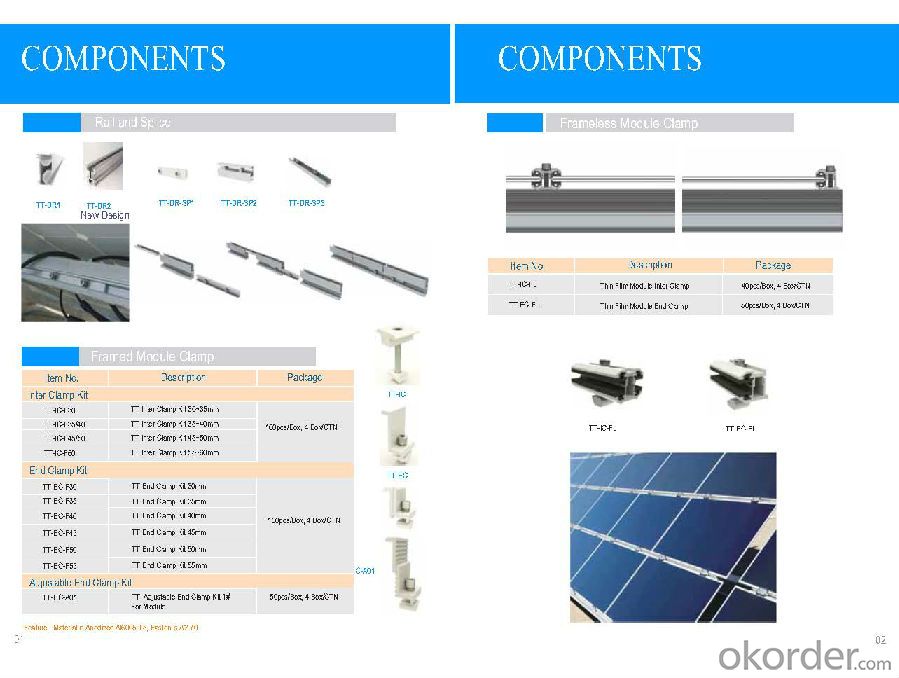
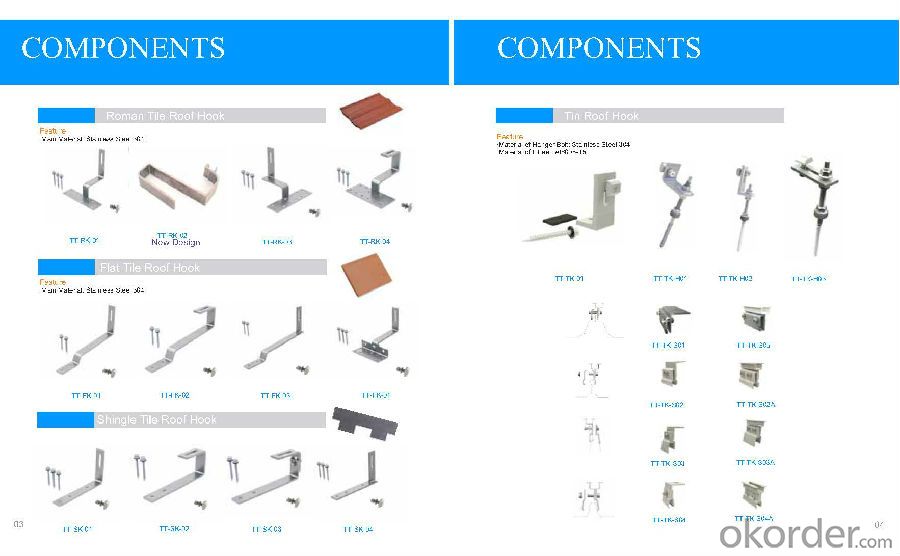
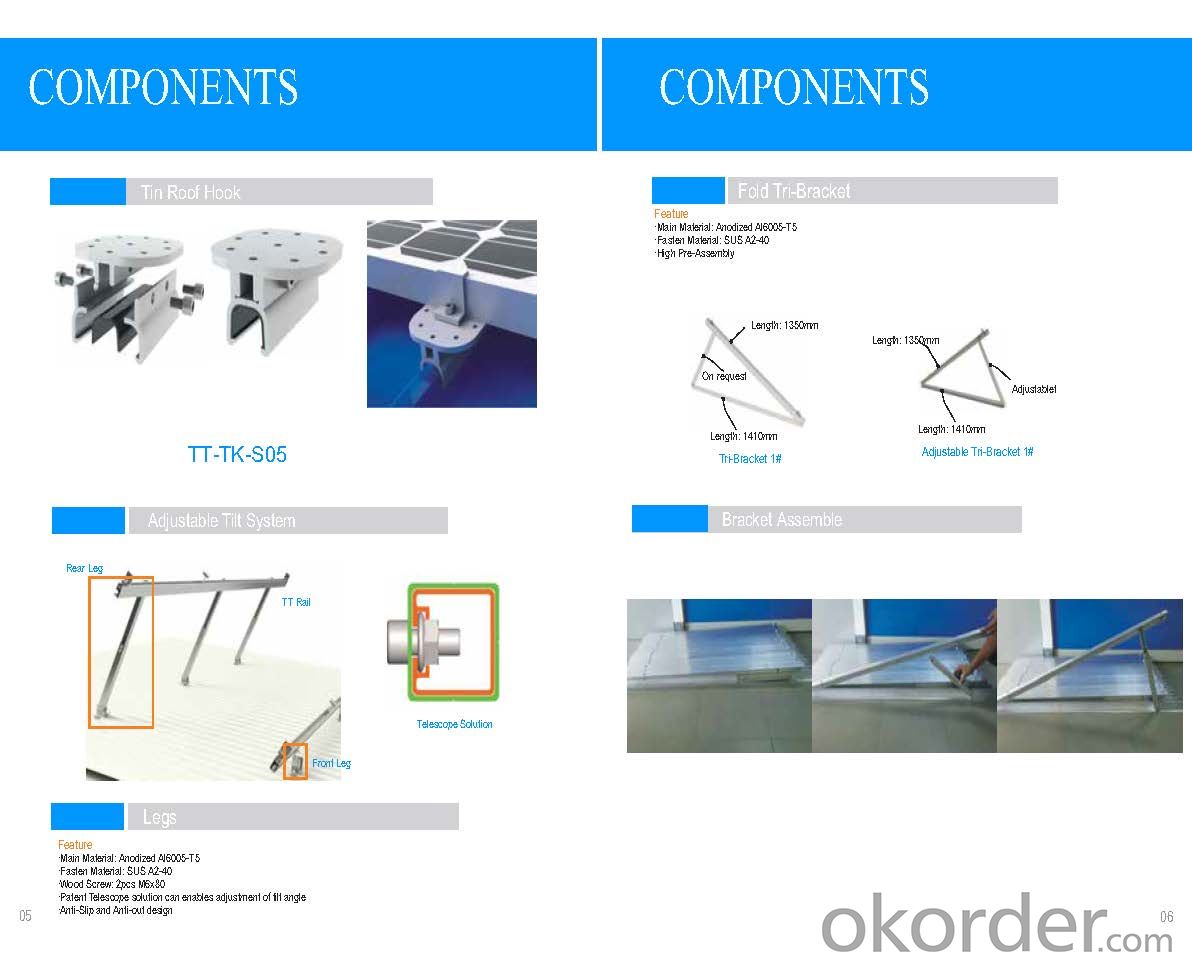
- Q: Can a solar mounting system be used with curved roofs?
- Yes, a solar mounting system can be used with curved roofs. There are specialized mounting systems available that can be adjusted and designed to fit the shape and curvature of a curved roof, allowing for the installation of solar panels on such roofs.
- Q: Are there any specific requirements for installing solar mounting systems in high-temperature regions?
- Yes, there are specific requirements for installing solar mounting systems in high-temperature regions. These requirements include using materials that can withstand high temperatures, ensuring proper ventilation and airflow around the solar panels, and considering the impact of temperature on the efficiency and performance of the system. Additionally, proper maintenance and monitoring of the system are crucial in high-temperature regions to prevent overheating and ensure optimal performance.
- Q: Can a solar mounting system be installed on a rooftop with a mansard roof?
- Yes, a solar mounting system can be installed on a rooftop with a mansard roof. However, it may require specialized mounting techniques to ensure proper installation and maximize efficiency due to the unique design of a mansard roof.
- Q: What is the solar stent system?
- Solar photovoltaic stent, is a solar photovoltaic power generation system in order to place, install, fix the solar panel design special stent. General materials are aluminum, carbon steel and stainless steel. The main parameters: Installation location: Building roof or curtain wall and ground installation orientation:
- Q: What are the advantages of using a ground-mounted solar system?
- There are several advantages of using a ground-mounted solar system. Firstly, ground-mounted systems can be installed in any location with sufficient space, unlike rooftop systems which require suitable roof space. This flexibility allows for optimal positioning to maximize solar exposure and energy production. Additionally, ground-mounted systems are easier to install and maintain since they don't require climbing onto roofs. They also provide better access for cleaning and maintenance. Moreover, ground-mounted systems can be easily expanded or upgraded if energy needs increase in the future. Finally, ground-mounted systems tend to have better ventilation, resulting in improved heat dissipation and increased efficiency compared to rooftop systems.
- Q: Can a solar mounting system be used in areas with limited access to tax incentives?
- Yes, a solar mounting system can still be used in areas with limited access to tax incentives. While tax incentives can provide financial benefits and make solar installations more affordable, they are not the only factor to consider. The primary benefits of solar energy, such as reduced electricity bills and environmental impact, remain regardless of tax incentives. Additionally, the cost of solar panels and mounting systems has been decreasing over the years, making them more accessible even without incentives. Therefore, a solar mounting system can still be a viable option for areas with limited access to tax incentives.
- Q: Are there any specific requirements for installing a solar mounting system on a rooftop with chimneys or vents?
- Yes, there are specific requirements for installing a solar mounting system on a rooftop with chimneys or vents. It is important to ensure that the mounting system is designed in a way that avoids obstructing or interfering with the chimneys or vents. The system should be installed in a manner that allows for proper ventilation and maintenance of the chimneys or vents. Additionally, it is crucial to evaluate the structural integrity of the rooftop and ensure that the mounting system is securely attached to withstand any potential wind or seismic loads.
- Q: Can a solar mounting system be installed on a farm or agricultural operation?
- Yes, a solar mounting system can be installed on a farm or agricultural operation. In fact, it is becoming increasingly popular for farmers to install solar panels on their land as it provides a sustainable and cost-effective source of energy. These systems can be mounted on rooftops, open fields, or even integrated with existing infrastructure like barns or sheds. By harnessing the power of the sun, farmers can reduce their reliance on fossil fuels, lower their energy costs, and contribute to a greener future.
- Q: What is the full support system
- Full scaffolding is mainly used for large single-storey building, exhibition hall, gymnasium and other high-rise, large building between the top of the building decoration and structural construction, must contain pole, bar, bracing, scissors support.
- Q: Are there any specific requirements for air conditioning or HVAC system integration when using a solar mounting system?
- Yes, there are specific requirements for air conditioning or HVAC system integration when using a solar mounting system. The solar panels and mounting structure should not obstruct or hinder the proper functioning of the air conditioning or HVAC system. Sufficient space and proper ventilation should be ensured to allow for the free flow of air around the system. Additionally, the solar mounting system should be designed and installed in a way that it does not interfere with the maintenance or repair of the air conditioning or HVAC system. Proper coordination and integration between the solar mounting system and the air conditioning or HVAC system are crucial to ensure optimal performance and efficiency of both systems.
Send your message to us
Ground Mount Solar Racking Systems - TT-SK-04 Solar Panel Mounting System
- Loading Port:
- Shanghai
- Payment Terms:
- TT OR LC
- Min Order Qty:
- -
- Supply Capability:
- 50万套 set/month
OKorder Service Pledge
OKorder Financial Service
Similar products
Hot products
Hot Searches
Related keywords
